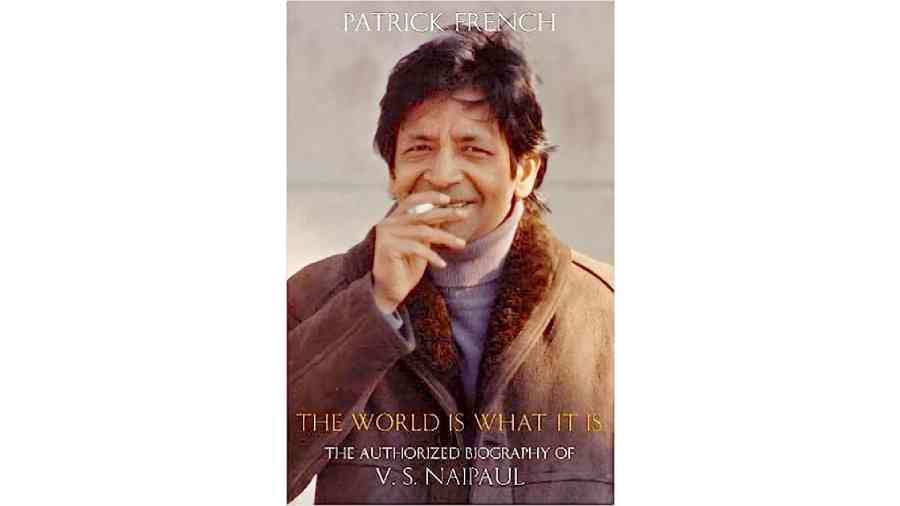On a quiet spring morning in London, as the sun lavished its beams on the lilac blooms, on March 16, Patrick French died in London, with his wife Meru Gokhale beside him. Often praised as the most generous of friends, kindest of fathers, husbands, and the most brilliant of historians and biographers who always practised compassion and reined in his biases with wisdom and grace, he ended his battle with cancer and went on a new journey. He was 56.
Meru and Patrick had met when he was 42, in India, during his research. She was 13 years his junior, an intelligent and successful editor at Penguin India at the time. Meru is the daughter of writer and well-known literary personality Namita Gokhale, and has a son Krishna, by Patrick.
Patrick’s first marriage, to Abigail Ashton-Johnson, ended in divorce and has three children from his first marriage — Tenzin, Abraham and Iris.
Patrick’s father was in the army and his mother was a homemaker. His upbringing was Catholic, and he was brought up with a very strong cultural presence of the stratifications of the English class system. However, being the iconoclast that he was, French pretty much broke through any cultural barriers that tried to corral him.
Best known for the most talked about “official” biography of our times, The World Is What It Is, the complex and somewhat depraved life of Nobel Laureate V.S. Naipaul. French lived his life with a deep love for India and Tibet. He had first met the Dalai Lama when he was 16, and that lit a spark that drew him to the Tibetan cause for freedom.
Twenty years ago, in 2003, Patrick French was selected to be bestowed the Order of the British Empire. He denied to accept the royal honour, putting his money where his mouth is.
Having earned a PhD in South Asian Studies from the University of Edinburgh, and being a Postcolonial historian on India and Tibet, he realised the motto of the honour: “For God and the Empire” went deep against the grain of his beliefs as a scholar, writer and a global citizen.
It is the same kind of resolve that has set French apart from many historians. He stood his ground and was not afraid to gently criticise the Dalai Lama’s “Hollywood style” strategy to actively support protests, suggesting that, perhaps, a backdoor strategy of diplomatic engagement with Beijing might have yielded better results.
It was that same courage to tell it as he saw it, that made him state unhesitatingly that: “From the late 1930s onwards, Gandhi was a liability to the freedom movement, pursuing an eccentric agenda that created as many problems as it solved.”
French earned himself a solid repuation as a biographer and was applauded for his meticulous research, light-handed references to the subject’s failures, folly and foibles, dispassionate presentation of facts and an easy, compelling style.
Younghusband: The Last Great Imperial Adventurer (1994), The World Is What It Is (2008), and Liberty Or Death: India’s Journey to Independence and Division (1997), are some of his richest contributions to the fields of history and biography. He won a number of prestigious writing awards, including the National Book Critics Circle Award, the Sunday Times Young Writer of the Year, and the Somerset Maugham Award.
During his tenure as the first dean at the School of Arts and Sciences at Ahmedabad University between 2017 and 2021, French tried to introduce a less stratified academic institutional set-up and tried to encourage a more collegial ethos. His colleagues on both sides of the Atlantic are unanimous about the loss that comes with his final goodbye. His legacy as an unbiased biographer, meticulous researcher and enthusiastic historian will hopefully live on with the next generation of scholars who are inspired by his unique sense of balance and kindness.
FRENCH FINDS THE FINE BALANCE

It is not often that a writer has his limelight stolen by the work he creates. It does happen though, as with the exceedingly insightful, honest, witty and yet fairly compassionate biography of the controversial and contested Nobel Laureate Vidiadhar Surajprasad Naipaul, by the late Patrick French.
Entitled The World Is What It Is: The Authorized Biography of V.S. Naipaul, it leaves the most seasoned reader in shock — the project undertaken by French was to plough through hundreds of pages of manuscripts and journals not only by the writer Naipaul but his first wife Patricia, who was the recipient of Naipaul’s signature neglect and cruelty.
French was the only biographer who was given the green light by Naipaul himself to access the original manuscripts housed at the University of Oklahoma - Tulsa. As I found out while researching for my doctoral dissertation on diasporic Indian writers at the University of Toronto, the Tulsa library has been the repository of Naipaul’s materials since 1991.
When Naipaul bagged the Nobel prize for literature in 2001, University of Oklahoma - Tulsa put out a statement saying: “The Nobel Prize in literature has bolstered the prestige of the University of Oklahoma - Tulsa, which houses his original manuscripts and other materials."
Naipal, the Trinidad-born British novelist and essayist, who died in 2018 at the age of 69, is a classic example of world literature’s most notorious players who spoke openly about his proclivity for prostitutes and brazenly had a long-standing affair with Margaret, an Anglo-Argentinian woman on whom he executed sadistic physical abuse and by his own confession, drove his first wife, who was suffering from cancer, to her death by cruelty and isolation.
Naipaul’s other golden standard of tight-fistedness earned him the epithet of “Scrooge” among most of his literary colleagues and writer friends in India and worldwide. The late editor-in-chief of Outlook magazine Vinod Mehta, who was a generous host and always ready with a support system when Naipaul came to India to research his books, had said to me, when we discussed the Nobel Laureate: “He was a strange man, really. He never offered to pay his way, even for a cup of coffee. I never understood why that was. It was not as if he was short of a few bob. That’s how he was. But he is a brilliant writer. No doubt about that. The way he is able to construct the most difficult characters who struggle with enormous challenges of their roots and identities makes him one of the best in the world. But if you want to know anything about him, he will not tell you. You will find him in his books.”
It is to French’s credit that he caught Naipaul’s dark side and wrote about this by presenting the facts, not decrying him or passing judgement. Naipaul’s sexual attraction to his wife Pat deteriorated progressively. “He felt too embarrassed to talk with her about this situation. In the summer of 1958, turning imagination into reality, he started to have sex with prostitutes,” says French, as a matter of fact.
Where French demonstrates exceptional concision and grace is in his ability to keep an objectivity from the material he so easily had available at hand, officially okayed by Naipaul. In most other biographers’ hands, one suspects the self-indicting material would be used at best, misused and at worst, abused. But French’s brilliance comes from being able to toe the straight and narrow.
Said French: “My approach to writing a biography is what it was when I began my first book. I wrote then that the aim of the biographer should not be to sit in judgement, but to expose the subject with ruthless clarity to the calm eye of the reader… Sometimes, a critic or biographer can see things that an author cannot.”
Perhaps Virginia Woolf, that brilliant feminist writer who transcends time and geography, reminds us in her 1927 essay on Biography, that as a form of writing in the hands of some of the best it is a genre that brings to light the novelist, poet or dramatist we are reading.
Thus, she says: “When and where did the real man live; how did he look; did he wear laced boots or elastic-sided; who were his aunts, and his friends; how did he blow his nose; whom did he love, and how; and when he came to die did he die in his bed like a Christian, or . . .By telling us the true facts, by sifting the little from the big, and shaping the whole so that we perceive the outline, the biographer does more to stimulate the imagination than any poet or novelist save the very greatest.”
In his acceptance speech of the Nobel Prize, on December 7. 2001, in Börssalen at the Swedish Academy in Stockholm, which Naipaul famously titled Two Worlds, aware of his reputation as an egregious man in real life, with a reputation for being unabashedly cruel, tight-fisted and an “user”, and in his defence, he stated: “The 19th-century French critic Sainte-Beuve believed that to understand a writer it was necessary to know as much as possible about the exterior man, the details of his life. It is a beguiling method, using the man to illuminate the work.”
It might seem unassailable. But Proust is able very convincingly to pick it apart. “This method of SainteBeuve,” Proust writes, “ignores what a very slight degree of selfacquaintance teaches us: that a book is the product of a different self from the self we manifest in our habits, in our social life, in our vices. If we would try to understand that particular self, it is by searching our own bosoms, and trying to reconstruct it there, that we may arrive at it.”
Now that Patrick French is no more, I will never be able to ask him directly to vouchsafe if he had read Marcel Proust’s deep insights about the double life of the writer that V.S. Naipaul so persuasively invoked and argued for in his Nobel Prize acceptance speech — the writer’s personal life on the one hand, and the books that the writer produces, on the other. But I suspect French, being the meticulous scholar that he was, would have replayed that Nobel Prize acceptance speech by Sir Vidia many times over, to find a fine balance between Naipaul’s two worlds.

Julie Banerjee Mehta is an author of Dance of Life and co-author of the bestselling biography Strongman: The Extraordinary Life of Hun Sen. She has a PhD in English and South Asian Studies from the University of Toronto, where she taught World Literature and Postcolonial Literature for many years. She currently lives in Calcutta and teaches Master’s English at Loreto College.
